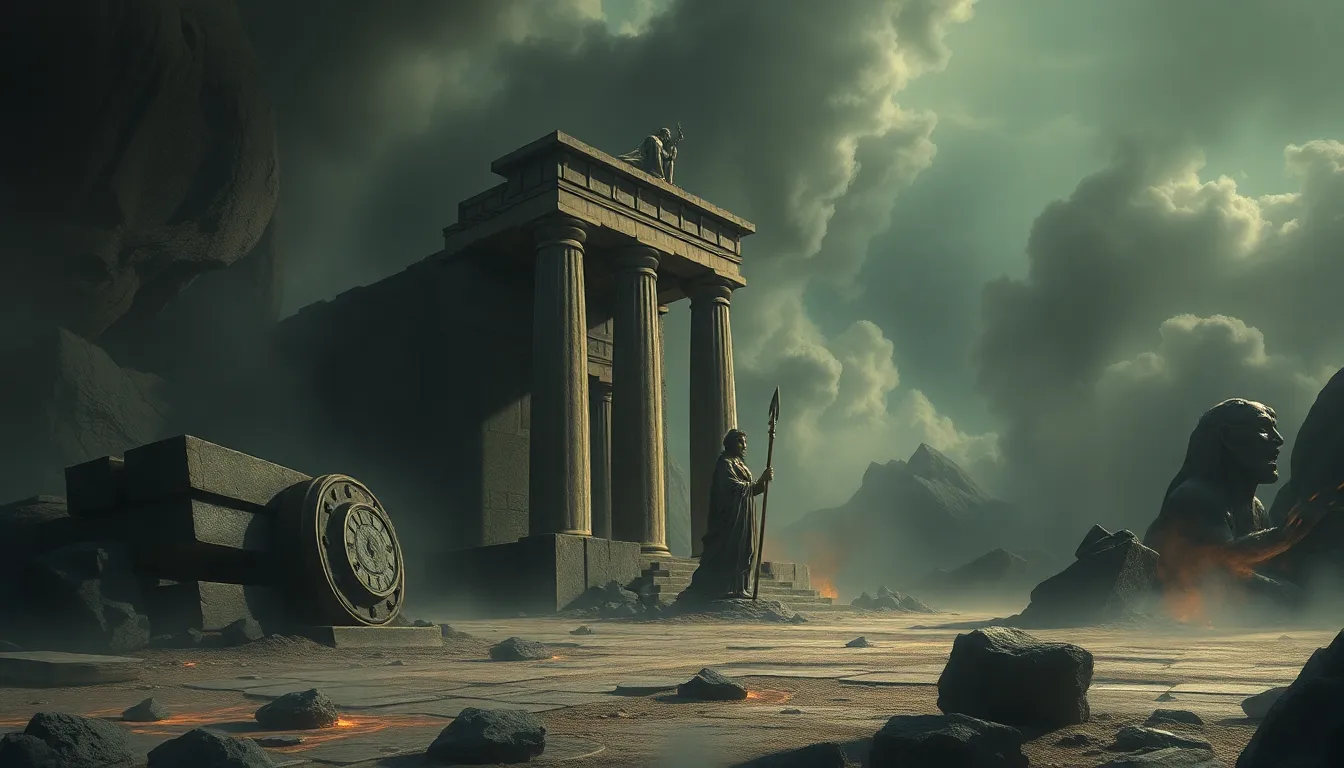The Myth of the Flawed Hero: Morality in Complex Characters
I. Introduction
The flawed hero archetype has become a prevalent figure in modern storytelling, captivating audiences with their intricate layers and moral complexities. A flawed hero is typically characterized by their human imperfections, which often lead to internal conflicts and questionable decisions. This archetype challenges traditional notions of heroism, where characters are often portrayed as morally absolute and virtuous.
Morality plays a crucial role in character development, shaping not only the journeys of these flawed heroes but also the narratives in which they exist. By exploring the moral dilemmas faced by complex characters, we can gain insights into the human experience and our understanding of right and wrong.
This article will examine the significance of flawed heroes in literature and media, tracing their historical evolution, defining their characteristics, and exploring the implications of their moral complexities.
II. Historical Context of the Heroic Ideal
The concept of heroism has deep roots in mythology and folklore, with heroes often embodying ideals of bravery, selflessness, and virtue. From the epic tales of Gilgamesh to the heroic narratives of Greek mythology, these characters have traditionally been celebrated for their extraordinary qualities and moral integrity.
Over time, the traits associated with heroes have evolved. The Renaissance brought about a more individualized hero, while the Romantic era introduced emotional depth and personal struggle. In contemporary storytelling, the emergence of the flawed hero reflects society’s growing acknowledgment of human imperfection and moral ambiguity.
III. The Flawed Hero Defined
Flawed heroes are distinguished by several key characteristics:
- Internal conflicts that challenge their moral compass
- Complex motivations that can be both selfish and altruistic
- A willingness to make morally questionable decisions
Notable examples of flawed heroes include:
- Hamlet from Shakespeare’s play, struggling with revenge and morality
- Walter White from “Breaking Bad,” who transforms from a mild-mannered teacher to a ruthless drug lord
These characters stand in stark contrast to traditional heroes, who are often depicted as unwaveringly good and heroic, devoid of significant moral flaws.
IV. Morality and Complexity: The Gray Areas of Character
Moral ambiguity is a defining trait of flawed heroes, as they often operate in the gray areas between right and wrong. Their actions are frequently influenced by personal motivations and backstories, which add depth to their character. For instance, Walter White’s descent into the drug trade stems from his desperate need to provide for his family after a terminal cancer diagnosis.
Case studies of flawed heroes illustrate how their choices challenge conventional morality:
- Tony Stark from the Marvel Universe, whose ego and weapons manufacturing raise ethical questions
- Don Draper from “Mad Men,” whose personal demons and infidelity complicate his role as a protagonist
V. The Impact of Flawed Heroes on Audience Perception
Flawed heroes resonate with audiences because they mirror the complexities of real life. Unlike idealized heroes, they face dilemmas that many can relate to, fostering empathy and understanding. This relatability allows audiences to connect with characters on a deeper emotional level.
Furthermore, rooting for flawed characters can have a significant psychological impact. Audiences may find themselves grappling with their own beliefs about morality, justice, and redemption as they navigate the flawed heroes’ journeys.
VI. The Flawed Hero in Different Genres
The archetype of the flawed hero spans various genres, each offering unique interpretations:
- Literature: Classic works often depict flawed heroes grappling with fate, such as Macbeth or The Great Gatsby. Contemporary novels frequently explore psychological depth, like Fight Club.
- Film and Television: From anti-heroes in superhero films to complex protagonists in dramas, flawed heroes dominate screens, as seen in shows like Breaking Bad and films like The Godfather.
- Graphic Novels and Video Games: Characters like Batman and Kratos illustrate the struggles of flawed heroes as they confront their pasts and seek redemption.
VII. Critiques of the Flawed Hero Concept
While flawed heroes are celebrated, they are not without their critiques. Some argue that glorifying flawed characters can lead to moral relativism, where audiences become desensitized to the consequences of unethical behavior. This raises questions about the values being propagated through these narratives.
Additionally, alternative archetypes such as the anti-hero and the tragic hero provide different perspectives on morality and complexity. Anti-heroes often lack redeeming qualities, while tragic heroes evoke pity and fear, leading to discussions about fate and consequence.
VIII. The Role of Redemption in Flawed Hero Narratives
Redemption is a recurring theme in flawed hero narratives, often serving as a catalyst for change. The journey of redemption can encompass several key themes, such as:
- Self-discovery and acceptance of one’s flaws
- Seeking forgiveness from others
- Transforming one’s life through altruistic actions
Characters like Jean Valjean from Les Misérables exemplify this journey, showcasing how flawed heroes can evolve and seek redemption, ultimately imparting moral lessons to the audience.
IX. The Future of the Flawed Hero in Storytelling
As storytelling continues to evolve, so too does the representation of flawed heroes. Emerging trends focus on deeper character development, emphasizing the balance between complexity and relatability. Audiences are increasingly drawn to narratives that challenge their perceptions of morality and heroism.
Predictions for the future of flawed heroes include:
- Greater diversity in flawed hero narratives, reflecting a broader range of experiences
- Increased focus on mental health and personal struggles as central themes
- A continued exploration of moral ambiguity in various genres
X. Conclusion
In summary, the myth of the flawed hero offers a rich tapestry of storytelling that reflects the complexities of human nature. Through exploring their moral ambiguities and personal struggles, flawed heroes invite audiences to engage with the gray areas of morality. As narratives evolve, the flawed hero will undoubtedly continue to challenge and inspire, providing a profound commentary on the human experience.


